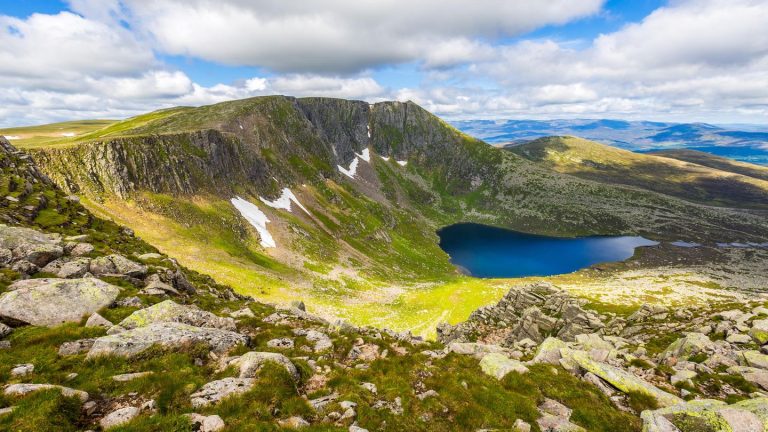
The heather-capped mountains of the Grampian Mountains, deep blue mountain lakes and moors and thick forests in between – these landscapes in Scottish Cairngorms National Park combine to create a breathtaking natural backdrop. The name “Cairngorms” is derived from the Scottish Gaelic language.“Cairn and Gormes” It means something like “Blue Hills” and refers to the broadest mountain massif in Britain.
Large parts of the largest and smallest national park in Great Britain not accessible by roads – The protected area is therefore best explored on foot and thus reveals its originality, which nature has preserved in many places.
If you walk through the seemingly endless wilderness of Cairngorms National Park, with a little luck you’ll come across some red deer, snowy owls, and maybe even British herd of reindeerwho have called the park their home since 1952.
Guided tours, bike tours and outdoor workshops are offered through the national park with a variety of topics Laggania Center for Outdoor Education Offered. Visitors can rent accommodation on the grounds of Cairngorms National Park to spend several days at a time in the park.
Summer is ideal for hiking
Months are the best time for mountaineering May to September, This is when you have the best chance of experiencing the natural beauty of Cairngorms in the best of sunlight. In general, however, the following applies in Scotland: rain is part of a journey! From late August to early September, heather also produces crimson blooms in the mountains and promises an especially beautiful nature experience.
If you are traveling to Cairngorms in winter, it is best to pack your ski gear. That’s when it’s ski season and the snow-capped mountains of the Scottish Highlands create a unique atmosphere.